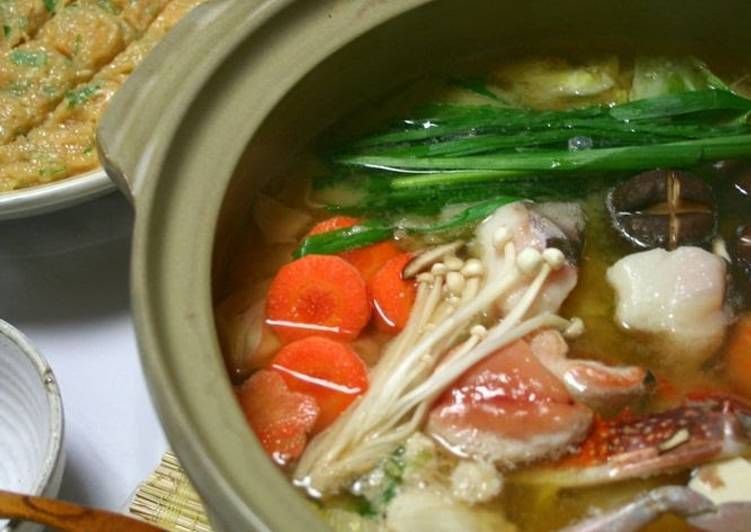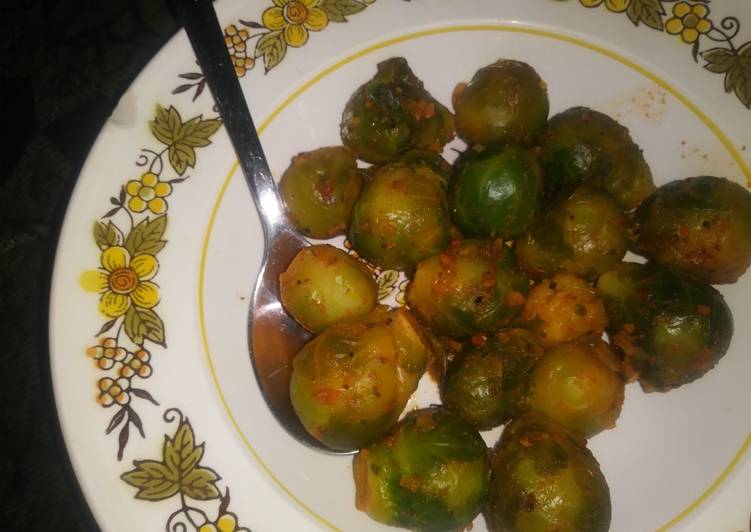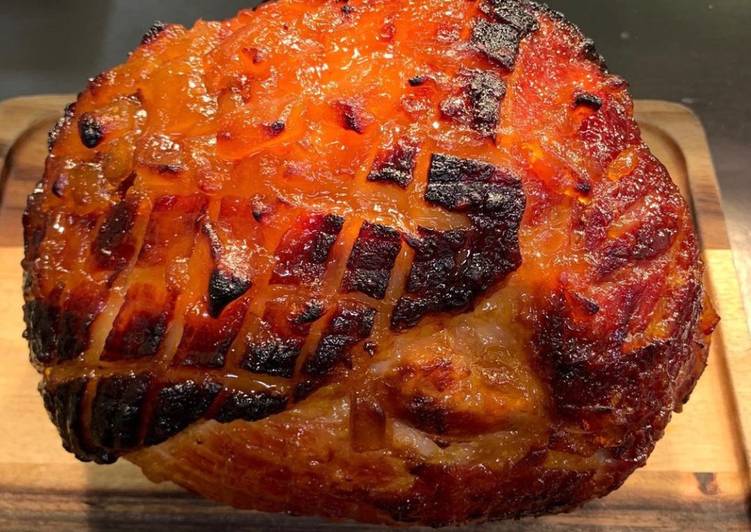
Hello everybody, it’s me, Dave, welcome to my recipe page. Today, we’re going to make a special dish, miso-flavored chanko nabe (hot pot). One of my favorites. This time, I will make it a bit unique. This is gonna smell and look delicious.
Chanko Nabe or Sumo Stew is a robust hot pot filled with all kinds of vegetables and tons of protein in a rich The characteristic of this hot pot is that there is no specific "recipe". And unlike other varieties of Japanese hot There are various flavors added to the broth. The most common choices are: Miso.
Miso-flavored Chanko Nabe (Hot Pot) is one of the most favored of recent trending meals in the world. It’s easy, it’s quick, it tastes yummy. It’s enjoyed by millions every day. Miso-flavored Chanko Nabe (Hot Pot) is something which I’ve loved my whole life. They are nice and they look fantastic.
To get started with this recipe, we have to prepare a few ingredients. You can have miso-flavored chanko nabe (hot pot) using 21 ingredients and 5 steps. Here is how you cook it.
The ingredients needed to make Miso-flavored Chanko Nabe (Hot Pot):
- Prepare [Miso broth]
- Prepare 1600 ml Dashi stock (kombu, bonito base)
- Prepare 1 clove/ piece each Garlic, ginger
- Make ready 1 cube 〇 Soup stock
- Make ready 50 ml 〇 Sake
- Prepare 6 tbsp 〇 Miso
- Prepare 50 ml 〇 Mirin
- Prepare 1 dash 〇 Salt
- Prepare [Tsukune]
- Prepare 300 grams Ground chicken
- Make ready 1 clove/ piece Garlic, Ginger (grated)
- Make ready 3 tbsp Japanese leeks (finely chopped)
- Get 1 small Egg
- Take 1 tbsp Katakuriko
- Prepare 1 tbsp Miso
- Make ready 1 Sesame oil
- Make ready [Ingredients for the hot pot]
- Make ready 1 Salmon, cod, shrimp, crab
- Take 1 Cabbage, carrots, chives
- Prepare 1 Shimeji mushrooms, shiitake mushrooms, enoki mushrooms
- Get 1 Tofu
But the most common flavoured soup stock of Chanko Nabe is a chicken broth. Chanko nabe is a type of Japanese hot pot eaten by sumo wrestlers. It features plenty of protein with chicken, fish, and tofu along with lots of Named after the Ishikari River in Hokkaido where salmon go to lay their eggs, this nabe features salmon as the main ingredient, and miso as the broth flavoring. Try and get a cast iron nabe pot for real authenticity. • Chanko Nabe is a very popular style of hot pot dish in Japan.
Instructions to make Miso-flavored Chanko Nabe (Hot Pot):
- [Prep the vegetables and fish] Cut the fish, vegetables, and tofu into bite-sized pieces. Crush the garlic and thinly slice the ginger. Make a cut in the center of the cabbage as shown in the photo and then cut into pieces of equal size.
- [Make the tsukune] Finely chop the Japanese leek and combine with all the ingredients for the tsukune. Knead well until the mixture becomes sticky.
- Add water and kombu to the pot and heat. When it starts to simmer and the kombu floats to the top, remove the kombu and add a dashi stock bag filled with bonito flakes, garlic and ginger. Bring to a boil again and simmer for 2 -3 minutes over low heat. Squeeze the liquid out of the dashi stock bag and remove. Add the 〇 seasonings.
- Lay the core pieces of cabbage in the bottom of the pot.
- Bring to a boil and add the fish and vegetables. When cooked through, it's done. Enjoy! The tsukune mixture can be dropped into the pot with a spoon while the broth is boiling.
A lot of vegetables and meat can be cooked in seasoned broth at the same time at It is an easy and great hot dish in winter time. Chanko Nabe is a well known food for Sumo wrestlers in Japan. Chanko nabe is a kind of stew or hot pot known as the original sumo food. Despite sumos being known for their huge statures, the chanko nabe Did you know? Sumo Hot Pot is eaten as part of a weight gain diet for Japanese sumo wrestlers as it typically contains a lot of meat, tofu and vegetables.
So that’s going to wrap it up for this special food miso-flavored chanko nabe (hot pot) recipe. Thanks so much for reading. I’m sure you can make this at home. There is gonna be interesting food in home recipes coming up. Don’t forget to bookmark this page on your browser, and share it to your loved ones, friends and colleague. Thank you for reading. Go on get cooking!


